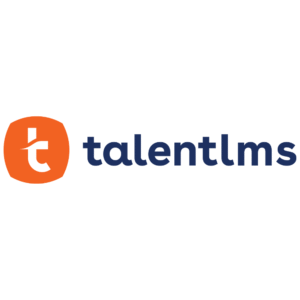Mind The Gap: How To Identify And Close Workforce Skill Gaps
The ability to identify industry trends to prevent workforce skill gaps is one of the most important skills (pun intended) a talent developer must possess in the 2018's enterprise landscape.
So much so, in fact, that a recent LinkedIn survey[1] among enterprise executives ranked skill gap prevention as the second highest priority for L&D initiatives—the first being soft skills training.
To help you hone this skill, we’ve gathered 5 effective tips to identify and address workforce skill gaps at your company.
1. Learn How To Identify Skill Gaps
The first step towards eliminating skill gaps is to identify them.
To do so, you have to build a list of the specific skills your company needs, and contrast it with the skills your employees already possess.
Anything on the first list that's not on the second will indicate a skill gap you need to resolve.
It's not as easy as it sounds, though, as coming up with a list of required skills can be tricky. For one, you should not rely, as many executives do, on the trendy buzzwords that inform the industry's "must have" skills of the day.
For example, Machine Learning, NoSQL, and VR have all come and gone out of fashion in the corporate space during the last five years, and many companies that didn't really need them invested heavily in them.
Ignore analysts and consultants telling you what's "hot" and which technologies and skills you "should" adopt. Their goal is (more often than not) to keep you hooked on their reporting and sell you stuff that you don't need.
Instead, try to identify your company's real skill development needs—both present and future ones—by analyzing your specific workflows, market segment, and future direction.
Once you’ve built the list with the skills that you need, performing a skill gap analysis for your employees is straightforward. Using the tests, quizzes, and survey capabilities of a powerful LMS, like TalentLMS, you should be able to have a comprehensive list of your employees skills (and skill deficiencies) in a very short time.
2. Teach Employees To Train Themselves
Even better than fixing workforce skill gaps is not to have them in the first place.
To achieve this, you’ll have to go beyond providing training in specific skills: you'll need to foster a learning culture in your company that encourages employees to train on their own and to strive to keep their skillset current.
This requires a two-pronged approach:
- Providing employees with the learning tools, content, and opportunities that they need to work on their skills
- Using promotions, raises, and other rewards as tools to push your employees towards self-improvement
Giving your employees access to different kinds of training content (apart from your own internal courses) through company-wide subscription to a business training content library will enable them to pick subjects that they’re interested in and work on their skills development on their own.
3. Keep An Eye On Your Competitors
While you should not blindly embrace the latest buzzwords in your industry, you should nonetheless pay attention to the competition. Study your industry’s short- and long-term trends, and see how they apply to your target market to get a better idea of the workforce skill gaps that you should focus on.
A surprisingly useful trick is to check your competitors' job postings. They are often indicative of the direction they’re taking next, and of the kinds of projects they have in the pipeline.
Don't rush to imitate them, though. Often it’s better to let a competitor try the waters with a new product line before diving in yourself. Especially if there's a high chance that they will fail.
In general, keep an eye on what others in your space are doing, but also on the kind of response that they get from the market. This will help you avoid moonshots, and invest in skills development towards areas with real growth potential.
4. Inject New Talent Into Your Company
The hardest skills for senior employees to catch up with are those that depend on technologies that emerged long after they've first entered the workforce. For those skills, you'll want to look at recent college graduates and younger prospective hires.
An injection of younger employees will instantly boost your company's skills pool with all the latest technologies and techniques that these new hires have encountered in their degree courses and internships.
Combining the younger hires' familiarity with the latest skills with the senior employees' experience and mentorship abilities will provide the perfect balance to move your company forward.
Establishing an internship program in your company to attract, identify, and foster such younger talent, will help in this direction.
To make it work, ensure that your company offers an attractive environment for young talent to come to work at, from a cultural and perk perspective, and build a good relationship with your local university.
5. Embrace Continuous Learning
To preemptively tackle the skills gap, you should approach learning as a natural part of your everyday workflows.
In an ever-changing business environment, employee learning shouldn't be seen as a time-limited activity based on a predetermined training schedule, but as an ongoing, continuous process.
To promote continuous skills development, you should foster a learning culture (as per tip #2), and invest in your training infrastructure and content.
To facilitate employee training, you should also provide them with an easy-to-use, always-on, online platform. Your LMS should be powerful enough to accompany your employees throughout their career, handling everything from their onboarding training program to compliance training and talent development.
Web access alone won't cut it either (it's 2018 already). A full approach should include native access to mobile-based microlearning friendly content, allowing employees to study from wherever they are, whenever they have some time.
Conclusion
The ability to identify gaps in the skills and knowledge of their company's workforce is crucial for a talent developer.
These five tips, plus a powerful LMS will help you develop your new talent and empower your existing employees through skills training. Give TalentLMS a try, and get instant access to all the tools that you'll need to close those gaps once and for all.
References
1. 2018 Workplace Learning Report










